Doug Heslep
Genre: Figurative
Media: Archival ink on Epson Cold Press Natural cotton rag paper
Gallery:
Website: www.dougheslepfineart.com
Facebook:
Figurative Photography:
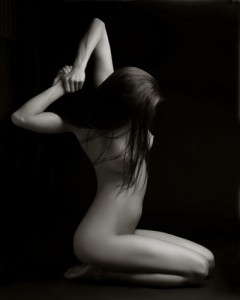 Within each woman is a wellspring of sensuality that bubbles to the surface in private, unguarded moments when she is freed from prying eyes and the strictures of clothing. But in public, she unconsciously betrays glimpses of her sensual self in the tilt of her head, lilt in her voice, and the way she moves across a room, settles into a chair, or crosses one slender leg over the other. These are the clues that photographer Doug Heslep uses to interpret the muses who populate his figurative fine art photography in his ongoing quest to depict their private persona.
Within each woman is a wellspring of sensuality that bubbles to the surface in private, unguarded moments when she is freed from prying eyes and the strictures of clothing. But in public, she unconsciously betrays glimpses of her sensual self in the tilt of her head, lilt in her voice, and the way she moves across a room, settles into a chair, or crosses one slender leg over the other. These are the clues that photographer Doug Heslep uses to interpret the muses who populate his figurative fine art photography in his ongoing quest to depict their private persona.
 “Before I pick up my camera,” Heslep confides, “I talk to each model for ten or fifteen minutes. I’m not as concerned with what she tells me as I am with her body language. How she sits, turns her head, smiles and responds.” He allows her bearing, posture, gestures, mannerisms and subtle movements to dictate the poses he suggests for the camera. All are spontaneous; none preconceived. “She has to feel completely at ease in order for each pose to flow. When that happens, her expression will reflect the contentment and confidence I’m seeking to portray.”
“Before I pick up my camera,” Heslep confides, “I talk to each model for ten or fifteen minutes. I’m not as concerned with what she tells me as I am with her body language. How she sits, turns her head, smiles and responds.” He allows her bearing, posture, gestures, mannerisms and subtle movements to dictate the poses he suggests for the camera. All are spontaneous; none preconceived. “She has to feel completely at ease in order for each pose to flow. When that happens, her expression will reflect the contentment and confidence I’m seeking to portray.”
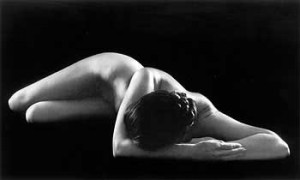 Heslep’s Galerie Nu series bears striking parallels to Ruth Bernhard’s nudes (like Perspective II, left). Like Bernhard, Heslep favors black-and-white for his figurative photography, and like Bernhard, Heslep uses black backgrounds in order to shift the focus to the model and her purposeful,
Heslep’s Galerie Nu series bears striking parallels to Ruth Bernhard’s nudes (like Perspective II, left). Like Bernhard, Heslep favors black-and-white for his figurative photography, and like Bernhard, Heslep uses black backgrounds in order to shift the focus to the model and her purposeful, 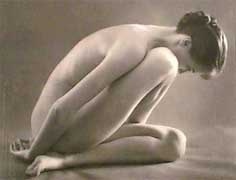 expressive pose. But for Bernhard, the effects of light on the female body were her paramount concern (as in The Eternal Body, right). “My quest, through the simple magic of light and shadow, is to isolate, to simplify and give emphasis to form with the greatest clarity,” Bernhard stated. “To indicate the ideal proportion, to reveal sculptural mass and the dominating spirit is my goal. Light is my inspiration, my paint brush. It is as vital as the model herself. Profoundly significant, it caresses the essential superlative curves and lines. Light I acknowledge as the energy upon which all life on this planet depends.”
expressive pose. But for Bernhard, the effects of light on the female body were her paramount concern (as in The Eternal Body, right). “My quest, through the simple magic of light and shadow, is to isolate, to simplify and give emphasis to form with the greatest clarity,” Bernhard stated. “To indicate the ideal proportion, to reveal sculptural mass and the dominating spirit is my goal. Light is my inspiration, my paint brush. It is as vital as the model herself. Profoundly significant, it caresses the essential superlative curves and lines. Light I acknowledge as the energy upon which all life on this planet depends.”
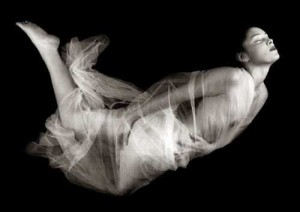 Bernhard’s orientation was primarily on the subject in her viewfinder. By contrast, Heslep internalizes what each model gives him and expresses his visceral response through pose, lighting and background. The difference is like comparing Vermeer to Pollock. Heslep’s brand of figurative work is premised upon the supremacy of his own artistic feeling about his subject. But rather than drips, splashes or tossed paint, Heslep expresses his internal reaction with his camera.
Bernhard’s orientation was primarily on the subject in her viewfinder. By contrast, Heslep internalizes what each model gives him and expresses his visceral response through pose, lighting and background. The difference is like comparing Vermeer to Pollock. Heslep’s brand of figurative work is premised upon the supremacy of his own artistic feeling about his subject. But rather than drips, splashes or tossed paint, Heslep expresses his internal reaction with his camera.
 Since Heslep’s figurative work is more about his emotional response to his subject than the subject herself, it is important to know that Heslep is a self-avowed perfectionist. With all due respect to icons like Cindy Sherman, Sally Mann and Robert Mapplethorpe, blemishes, wrinkles and flaws are antithetical to his firm conviction that the female form is the most beautiful thing on earth. “I admit it. In my photography, I put my subjects on a figurative pedestal. I insist on showing them in their most flattering aspect.” Toward that end, he subjects each of his figurative images to a complete body touch to remove any imperfections “so that my appreciation for each woman’s beauty and grace shines through the ultimate image.”
Since Heslep’s figurative work is more about his emotional response to his subject than the subject herself, it is important to know that Heslep is a self-avowed perfectionist. With all due respect to icons like Cindy Sherman, Sally Mann and Robert Mapplethorpe, blemishes, wrinkles and flaws are antithetical to his firm conviction that the female form is the most beautiful thing on earth. “I admit it. In my photography, I put my subjects on a figurative pedestal. I insist on showing them in their most flattering aspect.” Toward that end, he subjects each of his figurative images to a complete body touch to remove any imperfections “so that my appreciation for each woman’s beauty and grace shines through the ultimate image.”
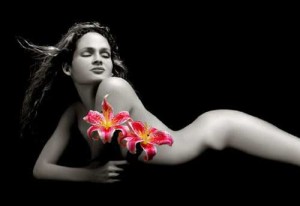 Thus overarching pursuit of classic perfection is another attribute Heslep shares with Bernhard. Discretion is yet another. “I strive for sensual, not sexual. My images always show respect.” Heslep rankles at viewers who equate one with the other. To Heslep, there’s clearly a bright line of demarcation.
Thus overarching pursuit of classic perfection is another attribute Heslep shares with Bernhard. Discretion is yet another. “I strive for sensual, not sexual. My images always show respect.” Heslep rankles at viewers who equate one with the other. To Heslep, there’s clearly a bright line of demarcation.
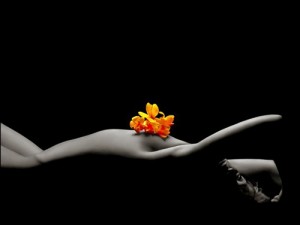 Heslep knows intuitively the lesson so poignantly taught decades ago by one Norma Jean Mortensen. Like Cleopatra before her, Marilyn Monroe came to be regarded as the epitome of raw sexuality. But Marilyn Monroe’s carnal appeal lay not in her voluptuous curves, plunging cleavage or deep, breathy tones. It was rooted instead in her sensuality, that incongruous mix of schoolgirl innocence and vulnerability that subconsciously that he deepest need and psychological craving was to be loved and desired.
Heslep knows intuitively the lesson so poignantly taught decades ago by one Norma Jean Mortensen. Like Cleopatra before her, Marilyn Monroe came to be regarded as the epitome of raw sexuality. But Marilyn Monroe’s carnal appeal lay not in her voluptuous curves, plunging cleavage or deep, breathy tones. It was rooted instead in her sensuality, that incongruous mix of schoolgirl innocence and vulnerability that subconsciously that he deepest need and psychological craving was to be loved and desired.
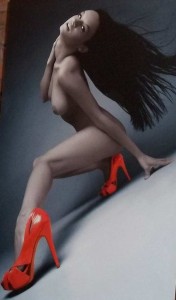 While it may have been innocence and vulnerability that lay at the root of Marilyn Monroe’s sensuality, the core attribute or attributes are different for every woman. It is Heslep’s rare ability to open himself to each muse’s unique sensibility that explains the introspective (When a Woman Knows, The Good Egg, Frenchie), reflective (The Struggle Within, Contemplation, Dark Dream, Afterglow), seductive (Seduction, My Neighbor’s Chair, The Embodiment of Desire) and playful (Like My Shoes (left), The Starting Line, Simply Divine) nature of Heslep’s figurative images. He is not afraid to confront that ephemeral, amorphous dividing line between sensuality and sexuality either in his models or himself in order to uncover the traits necessary to convert his models from mere women into singular sensual beings worthy of adoration for eternity in the Epson Cold Press Natural cotton rag paper he uses to print his finished work.
While it may have been innocence and vulnerability that lay at the root of Marilyn Monroe’s sensuality, the core attribute or attributes are different for every woman. It is Heslep’s rare ability to open himself to each muse’s unique sensibility that explains the introspective (When a Woman Knows, The Good Egg, Frenchie), reflective (The Struggle Within, Contemplation, Dark Dream, Afterglow), seductive (Seduction, My Neighbor’s Chair, The Embodiment of Desire) and playful (Like My Shoes (left), The Starting Line, Simply Divine) nature of Heslep’s figurative images. He is not afraid to confront that ephemeral, amorphous dividing line between sensuality and sexuality either in his models or himself in order to uncover the traits necessary to convert his models from mere women into singular sensual beings worthy of adoration for eternity in the Epson Cold Press Natural cotton rag paper he uses to print his finished work.
“The imagery has to say something,” Heslep flatly insists. “Each photograph has to speak.”
The Swan Series
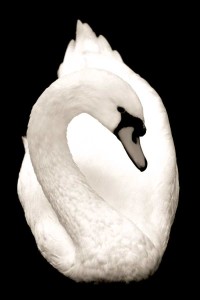 As a fine art photographer, Heslep is also accomplished in botanical (Bud-ding Moment and Android collections), underwater (Deep Blue Series), wildlife and landscape motifs, and his sunsets and images of lightning streaking across the skies over Fort Myers draw rave reviews and a host of likes and comments when he posts new pictures on his Facebook wall. But among his own personal favorites is his metaphorical and metaphysical Swan Series collection.
As a fine art photographer, Heslep is also accomplished in botanical (Bud-ding Moment and Android collections), underwater (Deep Blue Series), wildlife and landscape motifs, and his sunsets and images of lightning streaking across the skies over Fort Myers draw rave reviews and a host of likes and comments when he posts new pictures on his Facebook wall. But among his own personal favorites is his metaphorical and metaphysical Swan Series collection.
In American culture, the swan is a symbol of peace and tranquillity, but in European literature and mythology, the swan is a symbol of strength (because of their size and the height they can achieve in flight), chastity (partly because of their white plumage), loyalty (because they mate for life), artistry and beauty. From this, they have come to symbolize the power and longevity that is possible when we awaken to the creativity latent within ourselves.
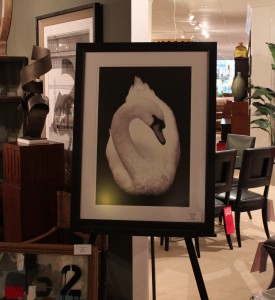 People today often equate swans with endings, but the idiom “swan song” actually originated 2,500 years ago. In Hellenistic times, the Greeks believed that swans sang but once during their lives, just before they died. But this belief also led to their association with prophecy, intuition, dreams and balance or harmony between competing cosmic forces.
People today often equate swans with endings, but the idiom “swan song” actually originated 2,500 years ago. In Hellenistic times, the Greeks believed that swans sang but once during their lives, just before they died. But this belief also led to their association with prophecy, intuition, dreams and balance or harmony between competing cosmic forces.
The images from The Swan Series can be appreciated either for their simple beauty or deeper philosophical meaning.
Articles.
- Fort Myers gives fine art photographer Doug Heslep big send-off (08-18-13)
- Fine art photographer Doug Heslep one of 2013 ‘Six Artists of ACT’ (06-19-13)
- FLOR500 ‘Native Wildflower Art Exhibition’ opens March 4 at S. Regional Library (02-27-13)
- Discretion and respect lies at the heart of Heslep figurative fine art photos (11-24-12)
- Doug Heslep figurative images based on artistic feelings about his subjects (11-23-12)













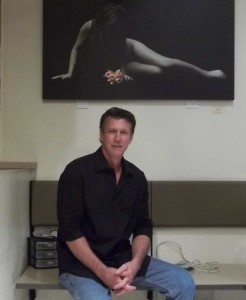

 Tom Hall is both an amateur artist and aspiring novelist who writes art quest thrillers. He is in the final stages of completing his debut novel titled "Art Detective," a story that fictionalizes the discovery of the fabled billion-dollar Impressionist collection of Parisian art dealer Josse Bernheim-Jeune, thought by many to have perished during World War II when the collection's hiding place, Castle de Rastignac in southern France, was destroyed by the Wehrmacht in reprisal for attacks made by members of the Resistance operating in the area. A former tax attorney, Tom holds a bachelor's degree as well as both a juris doctorate and masters of laws in taxation from the University of Florida. Tom lives in Estero, Florida with his fiancee, Connie, and their four cats.
Tom Hall is both an amateur artist and aspiring novelist who writes art quest thrillers. He is in the final stages of completing his debut novel titled "Art Detective," a story that fictionalizes the discovery of the fabled billion-dollar Impressionist collection of Parisian art dealer Josse Bernheim-Jeune, thought by many to have perished during World War II when the collection's hiding place, Castle de Rastignac in southern France, was destroyed by the Wehrmacht in reprisal for attacks made by members of the Resistance operating in the area. A former tax attorney, Tom holds a bachelor's degree as well as both a juris doctorate and masters of laws in taxation from the University of Florida. Tom lives in Estero, Florida with his fiancee, Connie, and their four cats.